Venus' Web
These are links to other great web sites about Venus. But beware: you don't want to get caught in Venus' Web! Don't stay away from Windows to the Universe for long!
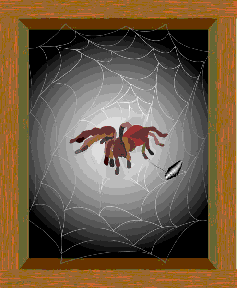
 Galileo Project Home
Galileo Project Home
 JPL Venus page Includes lots of images!
JPL Venus page Includes lots of images!
 Magellan Mission Home Page
Magellan Mission Home Page
 Mariner 10 JPL has a page about the Mariner 10 spacecraft.
Mariner 10 JPL has a page about the Mariner 10 spacecraft.
 NSSDC Master Catalog Display: Spacecraft More on the Mariner 10 spacecraft.
NSSDC Master Catalog Display: Spacecraft More on the Mariner 10 spacecraft.
 Pioneer Venus Orbiter
Pioneer Venus Orbiter
 Planet Venus Full of general information about our sister planet.
Planet Venus Full of general information about our sister planet.
 Venera Missions There were 16 Venera missions. Read about them all!
Venera Missions There were 16 Venera missions. Read about them all!
 Volcanos on Venus Venus has more volcanos than any planet in our solar system!
Volcanos on Venus Venus has more volcanos than any planet in our solar system!
You might also be interested in:
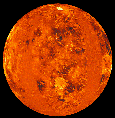
Venus is the second planet from the Sun, and is Earth's neighbor in the solar system. Venus is the brightest object in the sky after the Sun and the Moon, and sometimes looks like a bright star in the
...more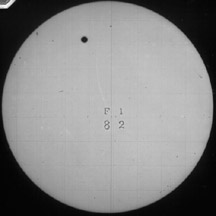
Transits of Venus are extremely rare astronomical phenomena. They occur in pairs, separated by eight years, with more than a century elapsing between successive pairs of transits. There will be two Venus
...more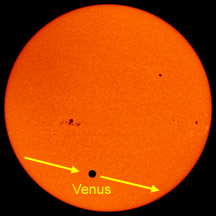
The planet Venus periodically passes directly between Earth and the Sun. This event, which is somewhat similar to a solar eclipse, is called a transit of Venus. Viewed from Earth, Venus and Mercury are
...more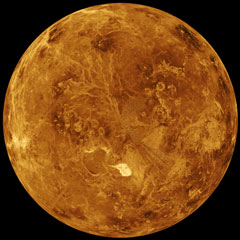
Would you expect to find ice caps and snow fields on Venus? Not likely! Venus is the hottest planet in our Solar System, and those high temperatures extend right on up to the poles. Though there aren't
...more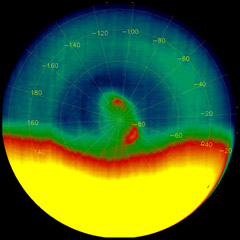
Venus has odd, swirling vortices in its atmosphere above each of the planet's poles. These vortex structures were first detected over the North Pole by NASA's Pioneer Venus Orbiter in 1978. The European
...more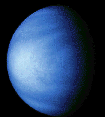
A planet goes through cycles of history depending upon how it cools in time. The following may be the history of Venus. Venus formed about 4 Billion Years ago. at the conclusion of forming it continued
...more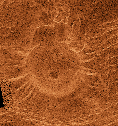
This is an example of a volcanic tick.
...more

 JPL Venus page Includes lots of images!
JPL Venus page Includes lots of images! Mariner 10 JPL has a page about the Mariner 10 spacecraft.
Mariner 10 JPL has a page about the Mariner 10 spacecraft. NSSDC Master Catalog Display: Spacecraft More on the Mariner 10 spacecraft.
NSSDC Master Catalog Display: Spacecraft More on the Mariner 10 spacecraft. Planet Venus Full of general information about our sister planet.
Planet Venus Full of general information about our sister planet. Venera Missions There were 16 Venera missions. Read about them all!
Venera Missions There were 16 Venera missions. Read about them all! Volcanos on Venus Venus has more volcanos than any planet in our solar system!
Volcanos on Venus Venus has more volcanos than any planet in our solar system!












